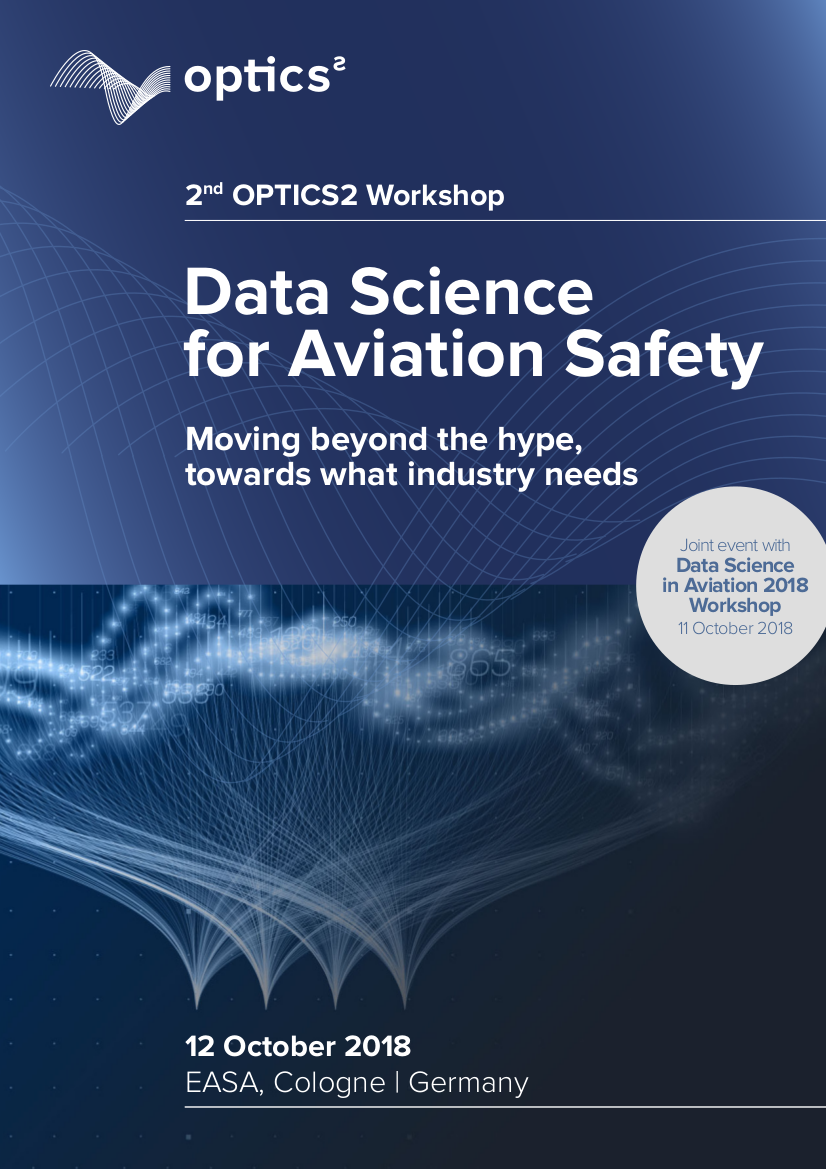8:30 Arrival at EASA & Welcome coffee
9:00 Opening by the European Commission
Pablo Pérez-Illana, EC-DG-RTD
9:10 The OPTICS2 Project and Workshop objectives
Simone Pozzi, Deep Blue – Project Coordinator
9:20 The Industry’s viewpoint: what are the upcoming changes to aviation markets, and how will these challenge safety?
Two top experts from each industrial segment.
9:20 – 9:35 Air Traffic Management
Keith Cartmale (EUROCONTROL-MUAC) & Claire Le Cras (NATS)
9:35 – 9:50 Airline
Manfred Mueller (LUFTHANSA) & Jacob de Jong (KLM)
9:50 – 10:05 Airport
Christoph Schnider (Munich Airport) & Joram Verstraeten (Schiphol Airport)
10:05 – 10:15 Regulator
Francisco Arenas Alvarino (EASA)
10:15 The Passenger’s viewpoint: what do they expect from Data Science for Safety?
Willy Smaulders (European Passengers’ Federation)
10:20 Coffee Break
10:40 Workshop sessions (groups): How can data science help address these safety challenges?
Scientific Advisors: Andrew Cook (Westminster University), Paula Lopez (Innaxis), Samuel Cristóbal (Innaxis).
12:15 Expert panel session (plenary): What are the 3 research avenues with the highest potential for triggering effective collaboration between research and industry?
13:20 Wrap-up of the workshop
13:30 End of the Day

